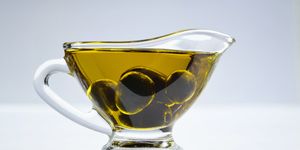Gelatin-Based Surgical Sealant for Surgical Wounds
Following surgery, adequately closing an incision is an important part of the process. More traditional methods, such as sutures or staples, can take time to administer correctly. Even if administered correctly, they can still cause tearing to surrounding tissue or even lead to additional blood loss. More advanced sealant methods, while promising, face a unique problem: the constant motion of internal organs. Many existing sealants have a hard time sticking to tissue that moves regularly, such as the lungs, and they can also have a hard time sticking to slippery tissues inside our body.
A team of researchers at the Terasaki Institute for Biomedical Innovation in Los Angeles have recently developed a new sealant material that could help better close surgical wounds by better adhering to internal tissue and overcoming the challenges of existing sealants. The new sealant is described in a recent article published in Cell Reports Physical Science.
The new sealant is a gelatin-based material that is thermoresponsive, which means it will start to form a small mass once it eventually reaches body temperature in the body.
To help the sealant better stick to slippery internal tissue, researchers incorporated caffeic acid into the sealant to give it more powerful adhesive properties. Caffeic acid is commonly found in coffee and in olive oil. Caffeic acid contains a compound called catechol. When this compound oxidizes, it can form oligomers, which play a crucial role in helping the sealant stick better to internal tissues.
In the study published in Cell Reports Physical Science, the sealant was used to effective seal a hole in a person’s lungs that were being inflated, highlighting that the sealant could be an effective way to close surgical wounds near tissue that is in constant motion.
Researchers hope their work paves the way for more research into effective surgical wound management, which could help improve recovery prospects for surgical patients.
Sources: Medgadget; Cell Reports Physical Science








